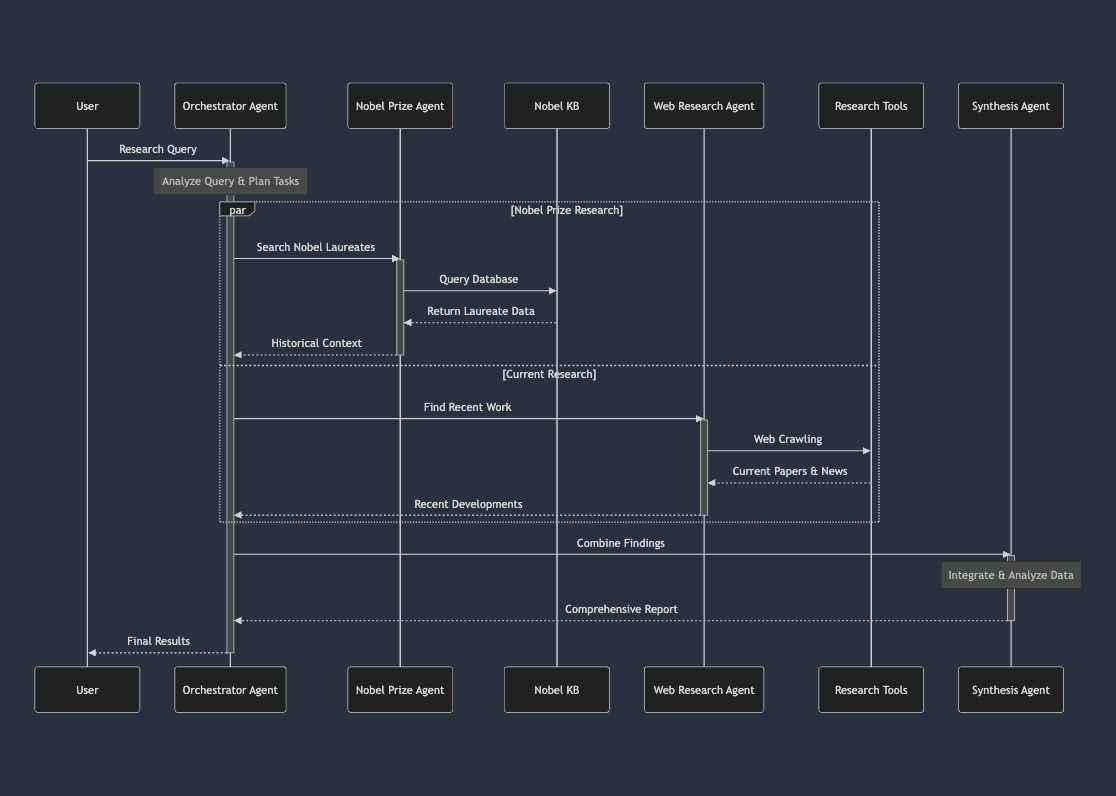Building Intelligent Multi-Agent Systems
Welcome to the Building Intelligent Multi-Agent Systems course on Naptha Learn Hub!
This advanced course brings together everything you've learned across the beginner, builder, and expert tracks to create sophisticated multi-agent systems:
- From the Beginner Track: Understanding of basic agent creation, deployment configs, and the Naptha SDK
- From the Builder Track: Experience with the Naptha Inference Client, agent orchestration, environment modules, and advanced module patterns
- From the Expert Track: Knowledge of Knowledge Base modules, Tool modules, and the Naptha Storage API
What are Intelligent Multi-Agent Systems?
Think of a multi-agent system like a team of specialists, each with their own expertise. When we give these agents access to knowledge bases and tools, it's like providing them with specialized training and equipment. The power of this approach becomes clear when we combine multiple knowledge bases and tools.
- 🤝 Collaborative problem-solving
- 📚 Access to diverse knowledge sources
- 🛠️ Specialized tool usage
- 🎯 Efficient task distribution
At Naptha, we champion this approach because it provides several key advantages:
- Verified Information: Agents access authoritative data through KBs instead of relying on potentially outdated knowledge
- Real-time Updates: Tool modules keep information current
- Specialized Handling: Each agent focuses on its expertise with appropriate tools
- Scalable Architecture: Easy to add new agents, KBs, or tools as needed
It's important to note that the magic happens through smart orchestration:
- Task Distribution: Orchestrator breaks down complex queries
- Parallel or Sequential Execution: Agents work simultaneously or sequentially with their tools and access to knowledge bases
- Data Flow: Information moves efficiently between components
- Result Synthesis: Final agent or inference client combines all findings
Smart orchestration is key to efficient multi-agent systems. The orchestrator ensures optimal resource usage and maintains clear communication protocols between agents.

What Will You Learn?
By the end of this course, you'll understand how to:
- 🏗️ Build intelligent multi-agent systems
- 🔌 Integrate Knowledge Base and Tool modules
- 🚀 Implement an coordinate efficient agent communication
- 🔄 Build synthesis capabilities
Course Structure
-
Building an Agent Module with Knowledge Bases (Module 2)
- KB module integration
- Query handling
- Data processing
-
Integrating Tool Modules into an Agent (Module 3)
- Tool module implementation
-
Smart Orchestration (Module 4)
- Agent coordination
- Parallel processing
- Result synthesis
-
Production & Beyond (Module 5)
- Testing & deployment
- Scaling considerations
- Best practices
Repository Links
Ready to build your first intelligent multi-agent system? Let's dive into integrating Knowledge Base modules in Module 2!
Click "Next" to proceed to the next lesson, or use the keyboard shortcut:
- Mac: ⌘ + Enter
- Windows/Linux: Ctrl + Enter